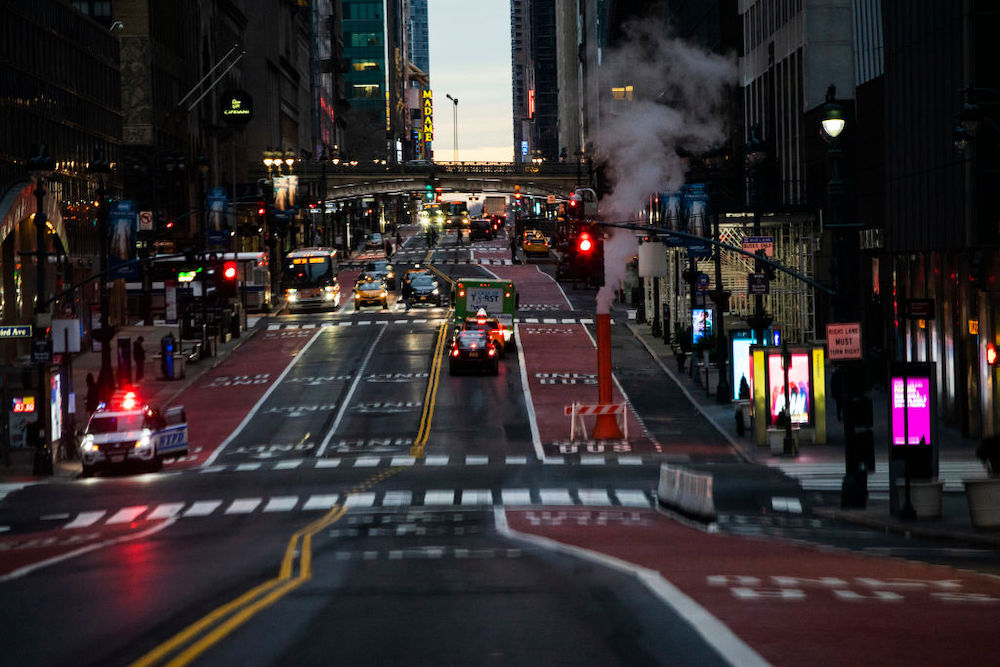- Coronavirus is cutting car traffic, offering a peek into what would happen if more streets were closed to private vehicles.
- Some cities are temporarily closing streets to allow for extra space for socially-distant exercise, while others have permanently shut them to cars.
- China, where the pandemic first appeared, is now curbing lookdowns, but transit ridership is down and bike use is up.
The coronavirus lockdowns have enabled Americans to see the possibilities presented by car-free streets, and planners are looking at changes that may keep some vehicles off the road.
The public-health crisis is giving mayors across the country a reason to open the pavement for people in need of space for social-distant walking and biking. New York Mayor Bill de Blasio announced this week that the city would implement a pilot program to set aside city streets for this purpose. Philadelphia has closed part of Martin Luther King Drive indefinitely to vehicular traffic in an effort to provide space for people to exercise safely.
“The need for street space for walking and cycling in cities is more important than ever,” Jemilah Magnusson, global communications director for the Institute for Transportation and Development Policy, told Karma.
If these pilot programs are deemed a success it may lead to permanent changes — at least that’s what transportation advocates want. But they warn that it takes more than just blocking cars to produce pedestrian- and bike-friendly spaces. Planners have to think about “not just moving vehicles, but moving people,” Elizabeth Deakin, professor emerita of city and regional planning at the University of California, Berkeley, told Smart Cities Dive.
“The overall lesson for any crisis is that cities need to have all the options,” said Magnusson, whose nonprofit works with cities to promote sustainable transport solutions. “Transport needs in a pandemic are different from what they would be in a flood or air quality crisis, for example, and having multiple robust systems, such as bike share, metro, and buses allow cities to prioritize the option that works best.”
Before the pandemic, there was a growing movement to close roadways to cars in crowded cities to gain space for other purposes and to curb pollution. San Francisco banned private vehicles on several blocks of Market Street, the city’s busiest road, starting Jan. 29. This has enabled streetcars, buses, bicycles and pedestrians to move at a brisker pace. Denver’s mayor announced last month that part of Babcock Street in front of City Hall will be shut to cars starting April 21.
Planners in San Francisco also widened sidewalks on Market Street, made transit changes and added public art. Buses and streetcars are now in the center lanes, and the bike lane is bigger and separated from other traffic by benches and railings. This has seemed to pay dividends already, with bicycle traffic up 20% the first day the street was closed to cars. The city has plans to plant trees and change pavement to make the artery more attractive.
European cities are at the forefront of putting the interests of pedestrians and bikes ahead of vehicle movement. Oslo and Helsinki had zero pedestrian fatalities in 2019 after adding bike lanes, banning cars from some streets and lowering speed limits.
The Chinese experience might offer lessons for American planners. The country has begun lifting draconian quarantines and plans to end the lockdown in Wuhan, the epicenter of the pandemic, on April 8. Some people appear to be leery about returning to public transportation, resulting in increased bike use and walking.
“Now that transit systems have started to reopen in Chinese cities, and we’re seeing that there was a big shift to walking and cycling during the pandemic, and that is continuing even now,” Magnusson said. “Metro systems are slowly filling up again, but people are still nervous about being in an enclosed place.”
Photo by Eduardo Munoz Alvarez/Getty Images






















